Finding Business Emails at Scale: How Databar.ai Transforms Email Discovery (2025)
Effortlessly Connect with Prospects
Blogby JanApril 21, 2025

They say outreach is a numbers game, but what if your numbers are wrong?
Reaching out to prospects with bouncing emails, guessed addresses, or generic "info@" mailboxes isn't just frustrating—it's a complete waste of time. And in sales and marketing, wasted time means lost revenue.
Business email addresses decay at an alarming rate of 25% per year, with some industries seeing turnover as high as 60%. Without accurate contact data, even the most brilliant outreach campaigns fall flat.
This guide will show you how Databar.ai improves the process of finding verified business emails into an optimized and automated operation that gets you in front of decision-makers faster.
The Real Cost of Bad Email Data
Let's talk about the real cost of bad email data – and it goes way beyond bounces. When outreach goes to incorrect or generic emails, it's not just missing an opportunity to connect. It's actively damaging sender reputation, increasing the likelihood that even good emails get flagged as spam. Email providers like Gmail and Outlook are constantly getting smarter about filtering out unwanted messages, and high bounce rates are a one-way ticket to the spam folder.
But the cost doesn't stop there:
- Teams waste valuable time crafting messages that never reach intended recipients
- CRMs become cluttered with unusable data
- Automation tools send follow-ups into the void
- Potential deals that could transform business are missed
The bottom line: accurate business emails are the foundation of effective outreach. Without them, you're building on quicksand.
How Databar.ai Approaches Email Discovery
Databar.ai offers multiple pathways to verified business contacts through a workflow-based approach that gives users control over the discovery process.
Stack Multiple Providers to Find the Data
Most email tools rely on a single database, which inevitably has gaps in coverage.
Databar.ai connects to 100+ data providers, giving comprehensive coverage across industries, company sizes, and geographies. This matters because no single source has complete coverage. ZoomInfo might have excellent enterprise data but miss smaller companies. Apollo might excel with tech startups but lack manufacturing contacts. Hunter might be strong in some regions but weak in others.
The platform allows access to these diverse sources without requiring separate subscriptions or API keys. You can use these data partners with "the Databar key" — meaning you don't need additional subscriptions to connect to these data providers. By accessing multiple sources, the system finds emails that single-source tools might miss.
Let’s dive into some of the most popular workflows for finding emails at scale:
Company URL to Email Discovery Workflows
Starting with just a company URL opens up powerful email discovery possibilities through customizable workflows.
Users can create custom workflows that begin by enriching basic company information. You can select specific data fields: company name, description, LinkedIn profile, founding date, headcount, estimated revenue, and more.
From there, the workflow can branch into finding people with specific roles at that company. Whether targeting sales decision-makers, marketing executives, or engineering leaders, you can specify the exact departments and roles of interest.
Once built, these workflows become reusable assets that can be applied to new company URLs, with enrichments running across an entire spreadsheet with a single click. The system shows real-time results as data flows in, revealing which providers deliver the most accurate information for specific targets.
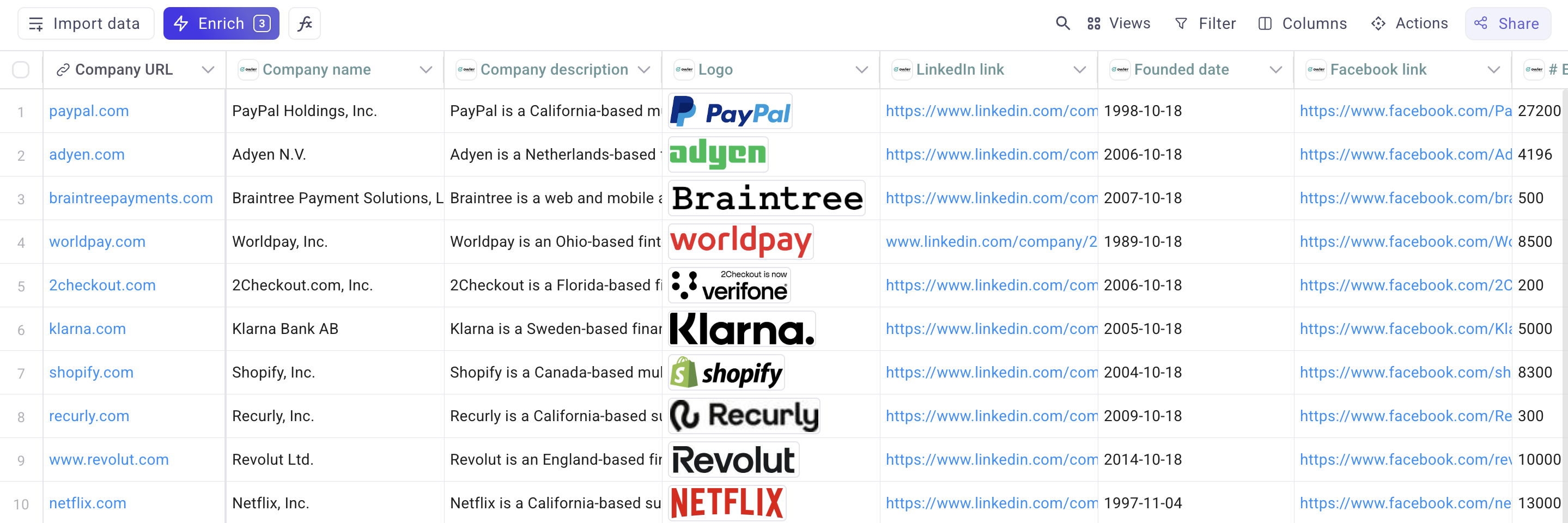
LinkedIn URL to Email Verification Processes
LinkedIn is rich with professional information but intentionally hides direct contact details. With Databar.ai, users build processes that determine exactly how the platform finds and verifies email addresses from LinkedIn profiles. Starting with a table of LinkedIn profile URLs (imported from a CSV or created from scratch inside Databar), users design workflows that:
- Extract key information from LinkedIn profiles
- Search data providers relevant to target industries
- Apply verification criteria to ensure deliverability
- Sort and prioritize results based on confidence scores
The level of control is significant – users can designate which data providers to try first for specific target audiences. For tech professionals, GitHub and developer-focused sources might take priority. For marketing executives, ContactOut data might be emphasized.
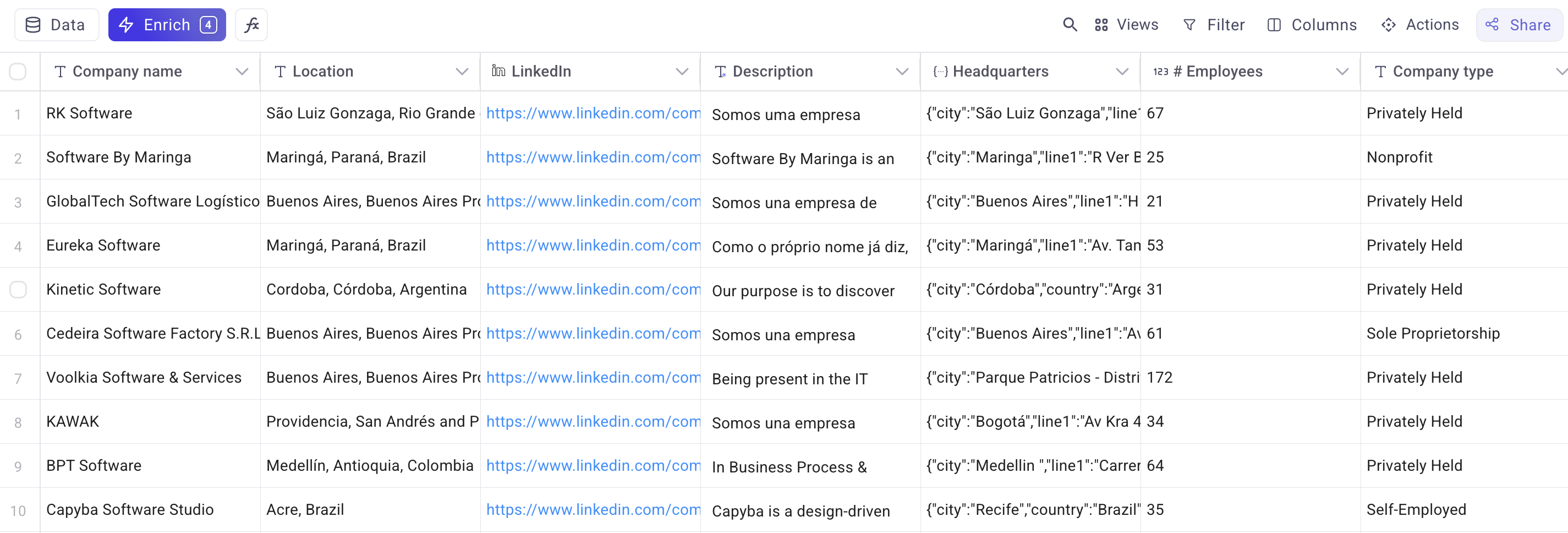
Facebook Page Scraping for Local Business Discovery
Local businesses often maintain active Facebook pages even when they lack robust LinkedIn profiles or presence in major databases. Databar.ai enables dedicated workflows for local business discovery, starting with Facebook business page URLs. The multi-step process:
- Extracts contact information from Facebook page About sections
- Identifies business email patterns
- Verifies emails through validation methods
- Enriches with context like business category and location
These workflows can be customized for specific local business types – a workflow for contractors might focus on finding owner emails, while one for restaurants might emphasize finding event coordinators.
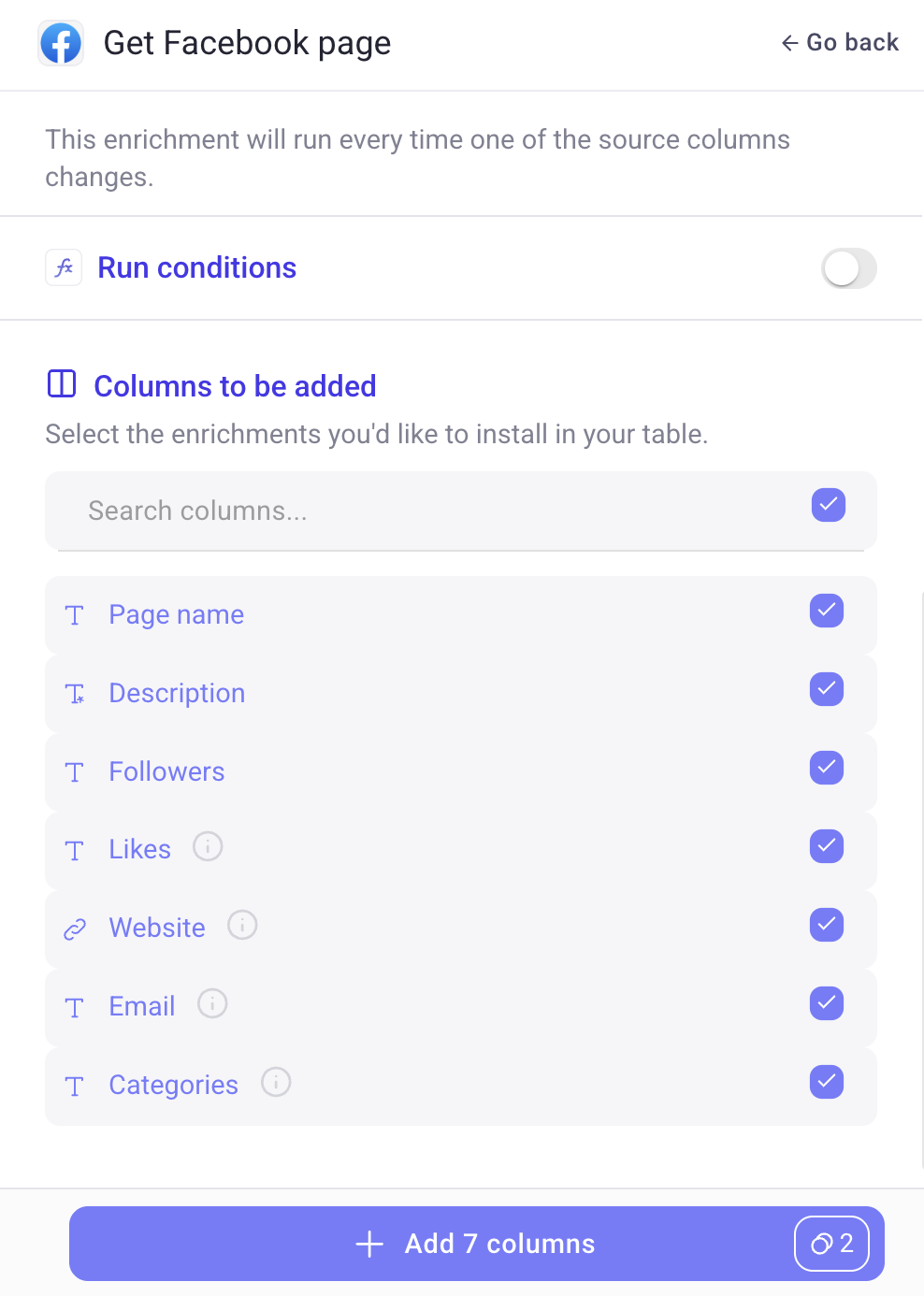
Social Media Profile Mining Across Platforms
Professional profiles across social platforms often contain valuable clues for finding business emails. Databar.ai supports comprehensive workflows that coordinate discovery across multiple channels. A cross-platform workflow might start with a Twitter/X handle, then:
- Extract bio information, looking for email addresses or website links
- Check if the profile links to platforms like GitHub or Medium
- Follow connected profiles to gather additional contact information
- Cross-reference with company domains to validate professional emails
AI Web Scraping Agent for Direct Website Extraction
For organizations not well-represented in traditional databases, Databar.ai's configurable AI agent can directly extract contact information from company websites.
Users can customize how the AI agent behaves by instructing it to:
- Extract information from any page on the web
- Prioritize certain webpage types (contact pages, team sections)
- Look for specific email patterns common in target industries
- Follow navigation paths likely to yield contact information
This approach is valuable for local businesses with simple websites, international companies with unique site structures, and niche industries with specialized contact conventions.
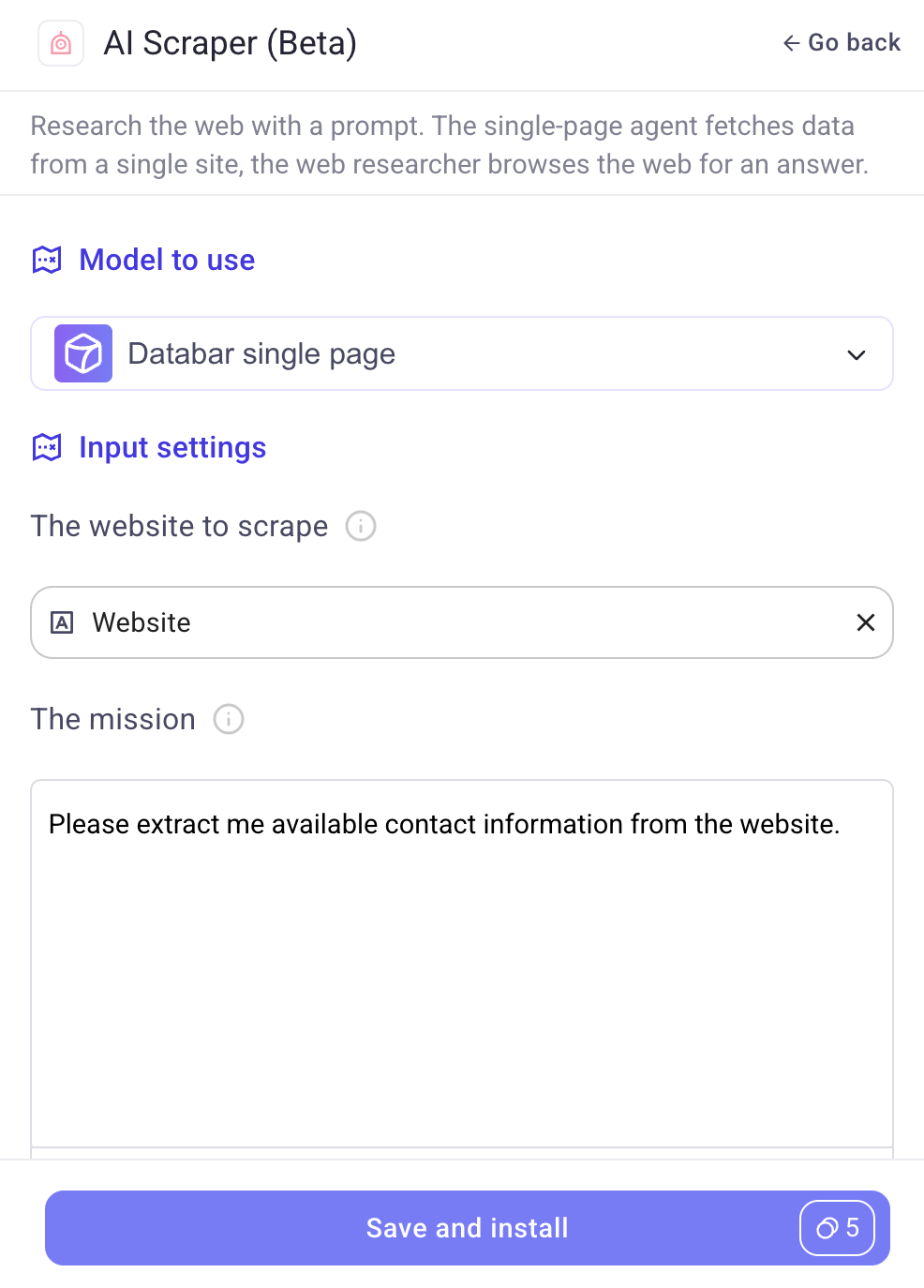
Custom Enrichment Workflow Design
The platform allows creation of custom enrichment workflows that connect multiple data sources in sequence.
Starting with whatever data is available (company names or URLs), users design complete workflows by selecting enrichments from different categories. The connections between these sources can be mapped together to create processes that:
- Start with company URLs
- Enrich with basic company data
- Find people with specific roles at each company
- Extract names, emails, LinkedIn profiles, and job titles
- Create tables containing just these email contacts
- Export to CRM or outreach tools
Once created, these workflows transform manual processes into automated systems that can run across entire datasets with a single click.
Email Waterfall Enrichment Configuration
Databar.ai's configurable waterfall approach ensures thorough email searches across multiple providers.
Users can design custom waterfall sequences tailored to specific target audiences, deciding which data providers to try first, second, and third based on performance for particular industries or company sizes.
For startups, it might begin with FindyMail, LeadMagic and Hunter, then People Data Labs. For enterprise targets, the sequence might vary. Multiple waterfall configurations can be created for different segments of prospect lists.
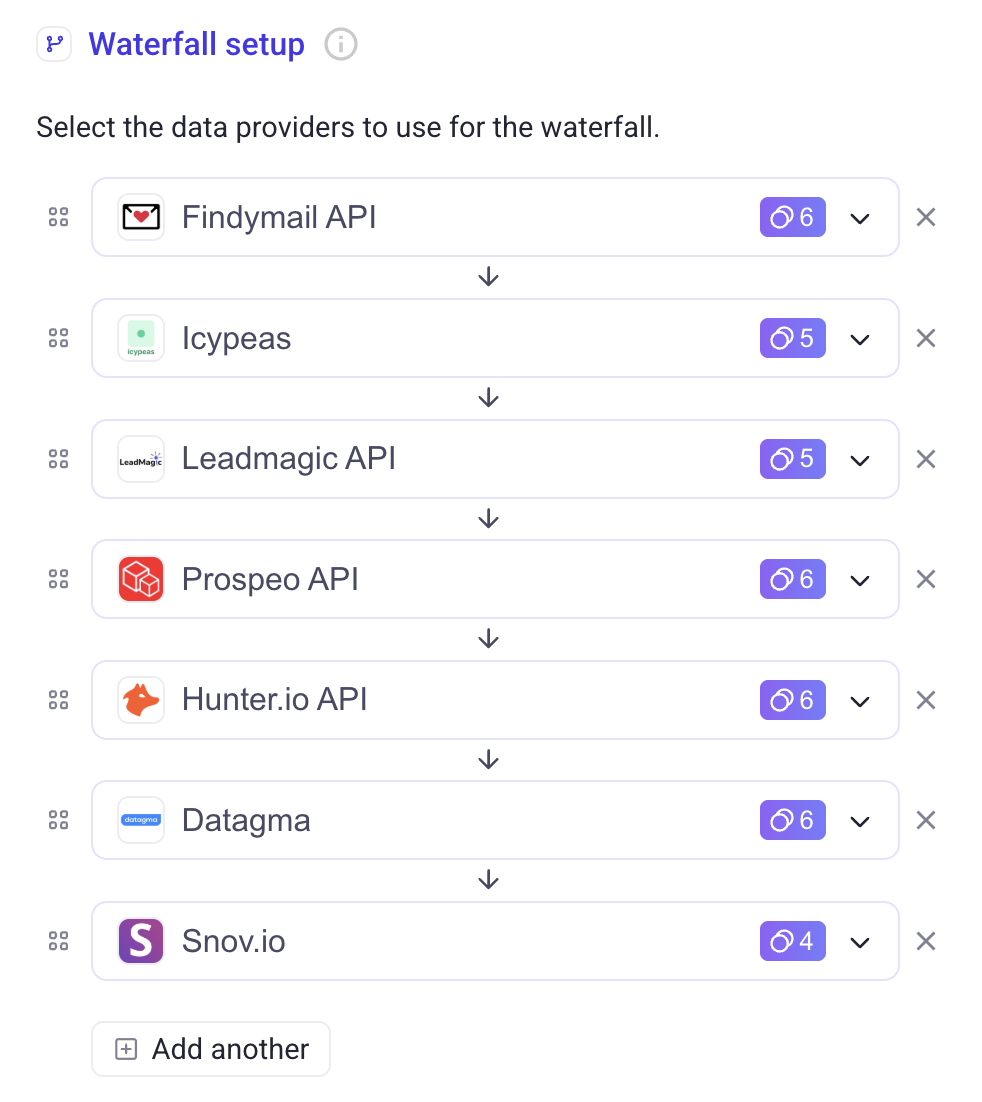
From Finding to Verifying: Ensuring Deliverability
Finding an email address is only half the battle—knowing it will actually reach the inbox is equally crucial.
Databar.ai integrates industry-leading verification tools directly into workflows. With built-in connections to specialized verification services like Bouncer and Emailable, users can choose verification providers that best fit their specific needs and budget.
These integrated verification tools perform comprehensive checks at multiple levels:
- Syntax verification confirms proper formatting
- Domain verification checks for valid MX records
- Mailbox verification tests if addresses exist without sending actual emails
- Spam trap detection identifies known honeypot addresses
The verification steps fit seamlessly into email discovery workflows – no need to export emails to separate verification tools and re-import results. Each email receives a clear status from the chosen verification provider: Valid (ready for outreach), Invalid (does not exist), or Risky (might exist, but shows warning signs).
By offering choices between verification providers like Bouncer and Emailable, Databar.ai provides flexibility to select services whose algorithms work best for specific target industries or regions.
Maintaining Fresh Contact Data Over Time
Contact data maintenance is an ongoing necessity as people change roles and companies constantly.
Databar.ai supports scheduled re-verification that sets automatic checks based on contact value and industry volatility. High-value prospects can be checked quarterly, general databases refreshed semi-annually, and custom schedules can target different segments.
The platform also offers CRM integration with systems like Salesforce, HubSpot, and Pipedrive. As shown in the tutorial, users can set up exporters that send enriched data directly to CRMs or email tools. These connections update contact records with fresh data, flag bounced emails for re-verification, and enrich existing contacts with additional information.
Here's a conclusion that maintains the article's style and provides a clear wrap-up:
Conclusion: Email Discovery is Workflow-Driven
As outreach channels grow more crowded and prospects become more selective about who they respond to, the quality of your contact data becomes the dividing line between campaigns that convert and those that collapse.
The most effective approach to email discovery isn't about finding a magic tool that does everything—it's about creating flexible, customizable workflows that adapt to different target audiences and evolve with your business needs. Databar.ai's workflow-based approach puts this power in your hands, letting you combine the strengths of multiple data providers, verification tools, and enrichment processes.
By moving beyond single-source thinking and embracing multi-provider data triangulation, you're not just finding more emails—you're finding the right emails with higher confidence and deliverability. And by making these processes repeatable and scalable through customized workflows, you transform what was once a tedious manual task into a systematic advantage.
The days of guessing email formats or settling for "info@" addresses are over. Modern email discovery is precise, verifiable, and built on workflows that continuously improve as you learn what works best for your specific audience. Your prospects deserve better than bounced messages—and with the right approach to email discovery, you can deliver exactly that. Start with Databar today!
Related articles
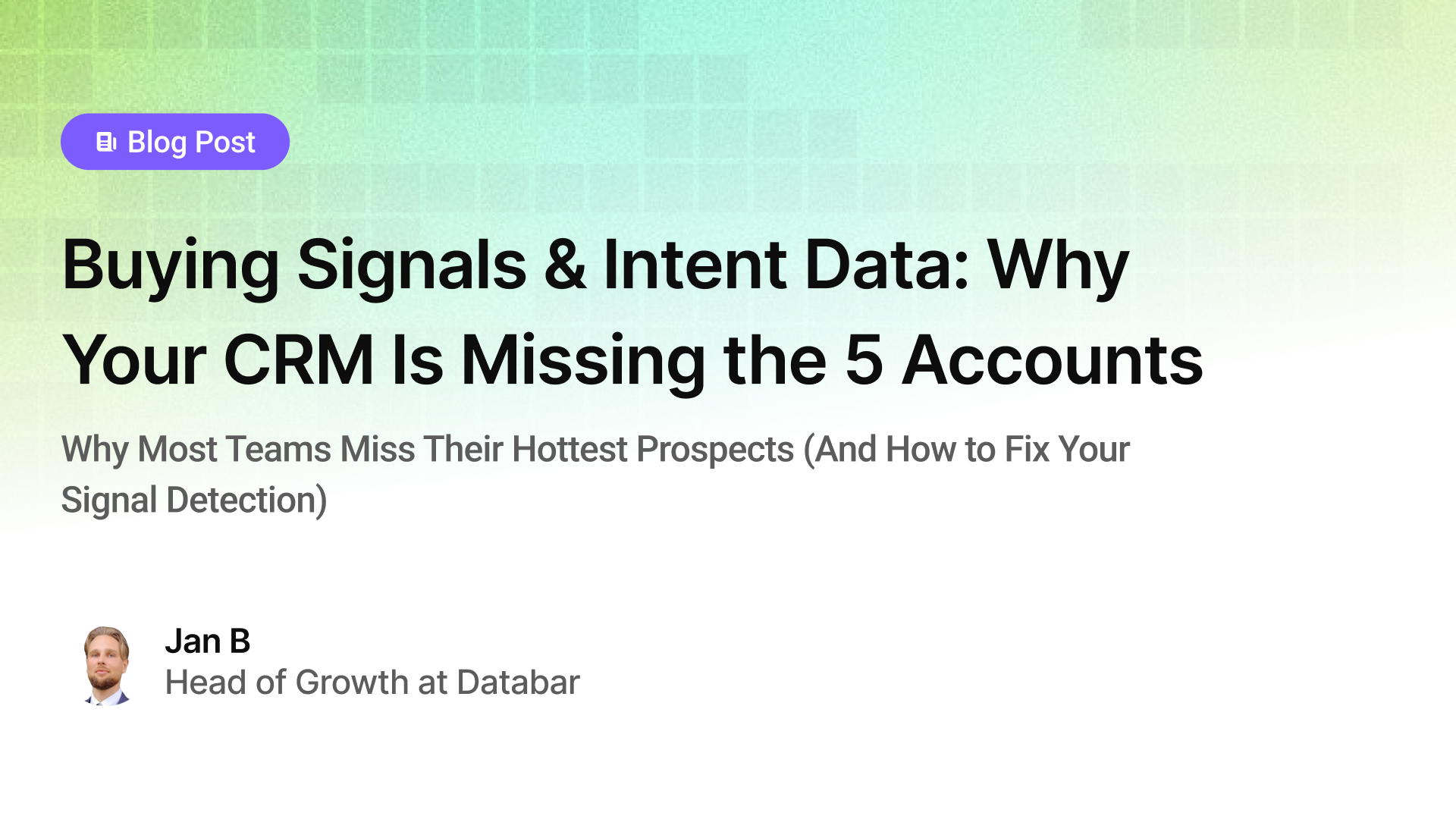
Buying Signals & Intent Data: Why Your CRM Is Missing the 5 Accounts
Why Most Teams Miss Their Hottest Prospects (And How to Fix Your Signal Detection)
by Jan, October 06, 2025

Lead Scoring & Account Segmentation: Why Most CRMs Get This Backward (And How to Fix It)
How to build a system that tells your team who to call, when, and why
by Jan, October 06, 2025
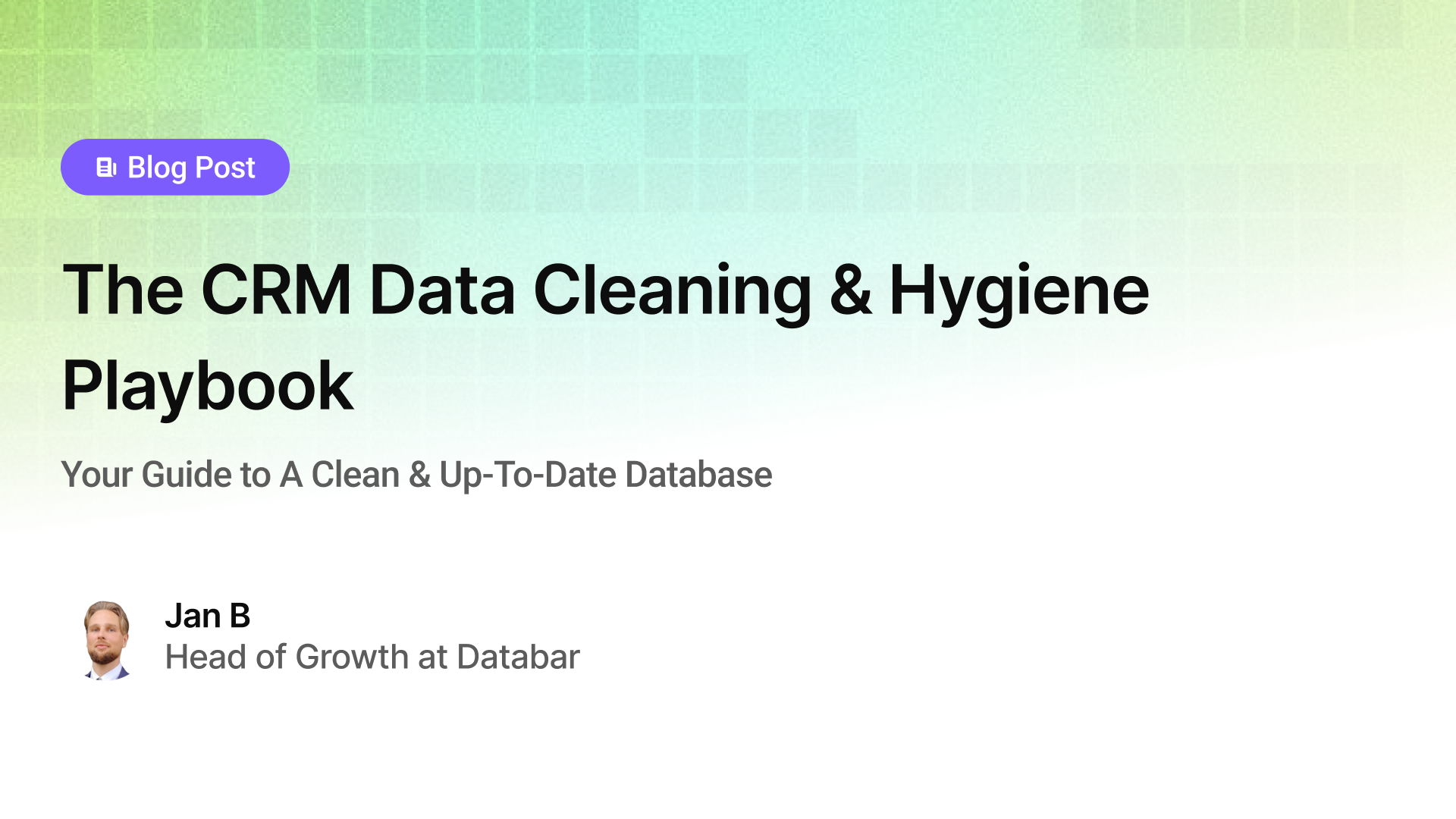
The CRM Data Cleaning & Hygiene Playbook
Your Guide to A Clean & Up-To-Date Database
by Jan, October 04, 2025
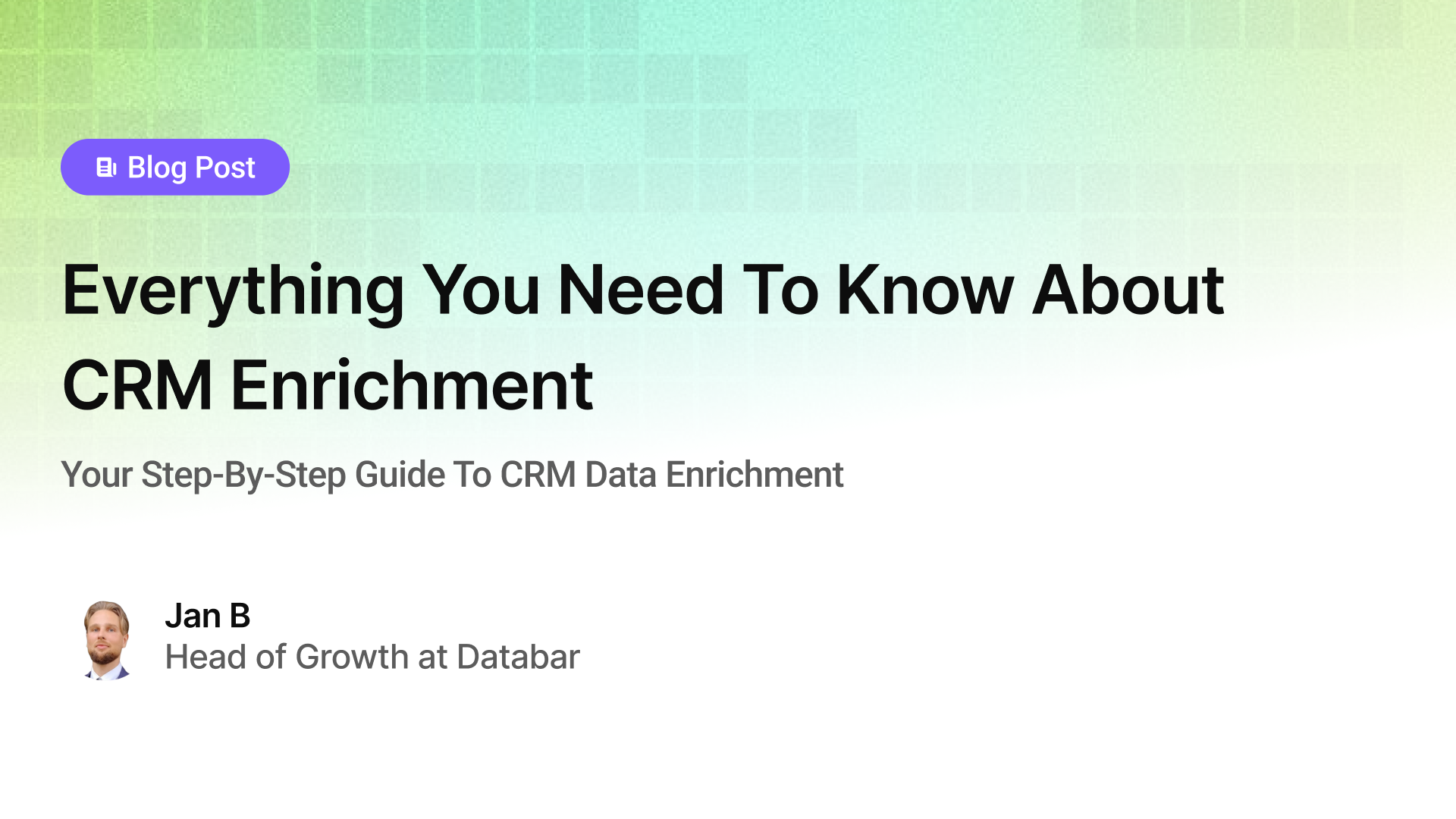
Everything You Need To Know About CRM Enrichment
Your Step-By-Step Guide To CRM Data Enrichment
by Jan, October 03, 2025